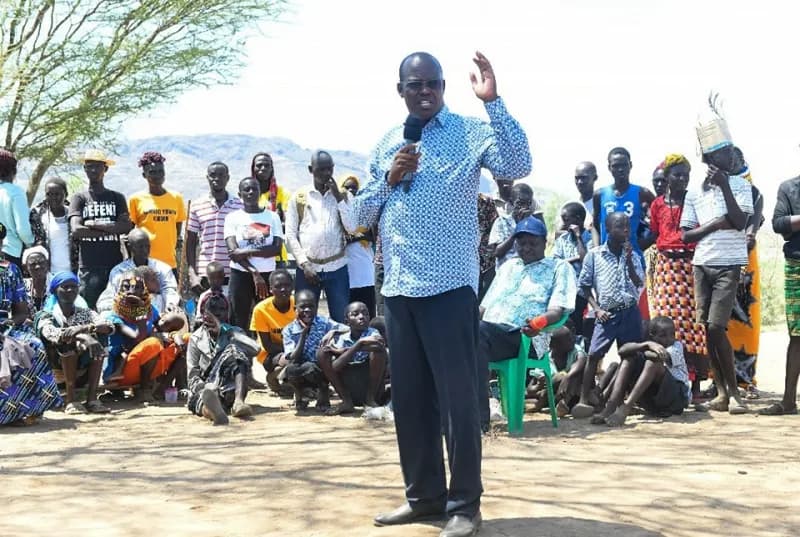We're loading the full news article for you. This includes the article content, images, author information, and related articles.
As national assessments begin, hundreds of students in Turkana County have been moved to secure centers, highlighting the severe challenges insecurity and climate change pose to education in Kenya's marginalized regions.

Hundreds of examination candidates in Turkana County were relocated to safer centers as the Kenya Junior School Education Assessment (KJSEA) and Kenya Primary School Education Assessment (KPSEA) kicked off on Monday, 27 October 2025. The emergency measures, prompted by a combination of rampant insecurity and severe flooding from the backflow of Lake Turkana, underscore the logistical and safety hurdles facing the administration of national exams in the region.
According to Turkana County Director of Education, Dr. Henry Lubanga, the relocations were a necessary precaution to ensure the safety of the 48,250 candidates sitting for the two national assessments in the county. He confirmed that education officials, in coordination with sub-county security committees, moved learners from schools in areas plagued by recent bandit attacks and those submerged by rising lake waters.
Dr. Lubanga identified Aroo Sub-county as a significant area of concern, citing recent and frequent bandit attacks that have disrupted learning in several schools, including those in Kainuk, Kaputir, Lorogon, Kapelbok, Nawoyaregae, and Nakwamoru. "We are coordinating with respective Sub-county security committees, especially in Aroo, which has witnessed frequent attacks, to ensure that candidates are moved to common examination centres for enhanced security," he stated on Monday. This move reflects a broader strategy by the Ministry of Interior, which has previously relocated candidates in the volatile Turkana and West Pokot border areas to ensure their safety during examination periods.
Simultaneously, the backflow from Lake Turkana has created another layer of crisis. Schools such as Natole, Katula, Ngimuriae, Merier, Nangitony, St Mark's Elelea Namukuse, Longech, and Lopangae in Turkana Central have been forced to move their candidates to facilities on higher ground. The influx of displaced students has strained resources in host schools. Daniel Etabo, the headteacher of Kalokol Mixed Primary School, noted that his institution had received a significant number of pupils from displaced schools like Natole Comprehensive School. The situation was partially alleviated by the construction of new classrooms by the Kenya Pipeline Company (KPC), which are now accommodating Junior Secondary School learners.
The 2025 examinations mark a significant period for Kenya's education system. Over 3.4 million learners are sitting for national assessments this season. This includes 1,298,089 candidates for KPSEA (Grade 6) and the inaugural cohort of 1,130,669 candidates for KJSEA (Grade 9), a major milestone in the implementation of the Competency-Based Curriculum (CBC). The Kenya Certificate of Secondary Education (KCSE) exams are also running concurrently.
The Kenya National Examinations Council (KNEC) has implemented several measures to ensure the integrity and smooth running of the exams. Examination containers are scheduled to be opened at 6:00 AM EAT for KPSEA and KJSEA papers. To enhance security, KNEC has increased the number of storage containers nationwide to 642 and is piloting the use of smart digital padlocks that alert a central command center in real-time when a container is accessed.
In Turkana Central, Deputy County Commissioner Thomas Siele confirmed the availability of five examination containers to facilitate distribution and urged all center managers to adhere strictly to KNEC regulations. While security officers are not deployed to every KPSEA and KJSEA examination center nationally, a significant security presence is maintained in areas with specific challenges like Turkana to safeguard materials and personnel.
The situation in Turkana brings into sharp focus the dual threats of insecurity and climate-related disasters on the education of children in Kenya's Arid and Semi-Arid Lands (ASAL). While authorities have assured the public of their preparedness, the long-term viability of education in these vulnerable regions requires sustained interventions beyond temporary examination-period relocations. FURTHER INVESTIGATION REQUIRED into the long-term government strategy for protecting schools and learners in banditry and flood-prone zones.
Keep the conversation in one place—threads here stay linked to the story and in the forums.
Other hot threads
E-sports and Gaming Community in Kenya
Active 6 months ago
Popular Recreational Activities Across Counties
Active 6 months ago
The Role of Technology in Modern Agriculture (AgriTech)
Active 6 months ago
Investing in Youth Sports Development Programs
Active 6 months ago